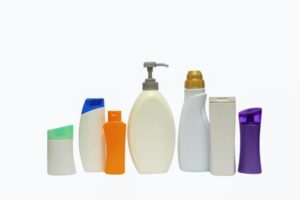
We all use plastic products in our daily lives. Our houses are usually full of plastics, especially modern houses. Examples: much furniture (e.g., engineered wood), upholstery fabrics (e.g., polyester), rugs (e.g., polyolefin), flooring (vinyl), foam in mattresses, synthetic fabric clothing, even the acrylic paint on our walls, and outdoor vinyl siding - it's all made with plastics from petrochemicals.
And when it burns in a fire, it's toxic and harmful to breathe.
Watch the video made by the UL Fire Safety Research Institute that show side- by-side burn comparisons between natural and synthetic furnished rooms. Pretty shocking! And yes, the all natural materials (e.g., wood, cotton) burned much slower and the smoke was less toxic than the synthetic materials. Flashover time (when escape becomes impossible) was under 5 minutes in the synthetic furnishing room and over 30 minutes in the natural furnishings room.
The following The Atlantic article sums up the dangers nicely. One vivid example is pointing out that most of our modern sofas are "basically blocks of gasoline". These are good reasons to consider using more natural materials in our homes (cotton, wood, glass, steel, etc.).
Excerpts from The Atlantic: What Happens When a Plastic City Burns
As flames rip through Los Angeles County, burning restaurants, businesses, and whole blocks of houses, it’s clear that the threat of urban fire has returned to the United States. But this time, the urban landscape is different: Modern homes are full of plastic, turning house fires into chemical-laced infernos that burn hotter, faster, and more toxic than their predecessors. ...continue reading "The Plastics In Our Homes Are Toxic In A Fire"

 Did you know that our modern lifestyle is exposing us to thousands of harmful chemicals? All of us are exposed to many harmful chemicals daily - in ordinary household products, at work and school, in our food, and in the air and water around us. These chemicals are found in plastics, in stain resistant finishes, non-stick cookware, flame retardants, fragrances, pesticides, water resistant finishes, and antimicrobial products.
Did you know that our modern lifestyle is exposing us to thousands of harmful chemicals? All of us are exposed to many harmful chemicals daily - in ordinary household products, at work and school, in our food, and in the air and water around us. These chemicals are found in plastics, in stain resistant finishes, non-stick cookware, flame retardants, fragrances, pesticides, water resistant finishes, and antimicrobial products. It is especially important to lower exposures to these harmful chemicals if you are considering conceiving a child, are pregnant, or have children. Many of these chemicals are linked to
It is especially important to lower exposures to these harmful chemicals if you are considering conceiving a child, are pregnant, or have children. Many of these chemicals are linked to